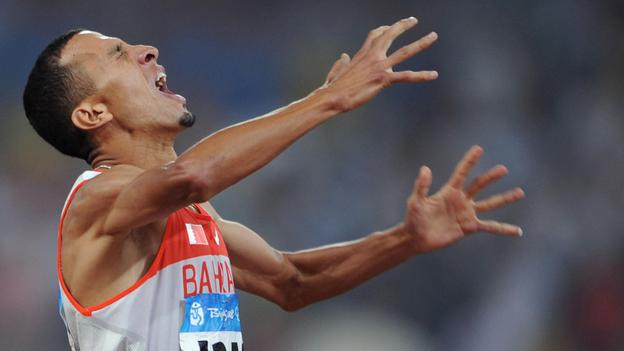He thought he had got away with it. In August 2008, track and field athelete Rashid Ramzi stood on the Olympic podium in Beijing to collect a gold medal for the men's 1500m. The Moroccan native was competing for Bahrain, and his victory gave his adopted country its first-ever Olympic medal. But 15 months later, he had been stripped of his win and his running career was all but over.
It was a major coup for the International Olympic Committee (IOC), and proof that so-called retrospective testing for banned substances worked. But that was nearly three years ago and the world of sports doping moves quickly. Experimental compounds are traded on the internet and at the race track before they are even approved for use in humans, whilst increasingly complex compounds and techniques are used to give athletes a crucial edge and hide the evidence. As the London Olympics approaches, the authorities are once again preparing to do battle with the dopers. And this time the scientists hope a raft of new techniques and measures will tip the balance in their favour.
These systems have been refined over decades of drug use. In the mid-nineteenth century, for example, there were various reports of athletes using drugs as diverse as nitro-glycerine, opium, cocaine and caffeine – all of which were considered an acceptable part of competition. But that changed in 1967 when, spurred on by rising levels of use, the IOC banned all performance-enhancing drugs. Just one year later, Swede Hans-Gunnar Liljenwall was the first to be caught out by the new rules after downing a couple of beers to steady his nerves before a pistol shooting competition. From those relatively innocent days, doping – and anti-doping – has become a hi-tech, high-stakes game of cat and mouse.
In London there are plans to conduct 5,000 drug tests – 500 more than were done in Beijing – covering nearly half of the 10,500 athletes competing, and including each and every medallist. “We’ll provide most negative results in 24 hours and positive ones in 48 hours,” says Jonathan Harris, head of anti-doping for the Games. In order to process so many samples, the testers have partnered with pharmaceutical giant GlaxoSmithKline, which has technology that can look for more than 60 illicit substances in a single test. “We’ve brought the world of pharma a little closer to the world of anti-doping,” he says.
Black market trade
But it is not just the scale of the operation that has changed. Where drug testing was once reactionary – officials would wait for an indication that athletes were using a new drug, then move to prohibit it and then develop a test – officials at organisations like the World Anti-Doping Agency (Wada) now aim to get ahead of the curve.
The agency maintains a detailed list of prohibited substances and methods, and it has devised the list to address not only specific drugs, but categories of potential drugs and methods to ensure that rules cover new methods not yet known to them. As a result, any drug that has not been approved for human use is automatically banned, as are substances with similar chemical structures or biological effects to other abused substances, such as hormones and growth factors.
“What’s really changed in recent years is that we want to predict what people will use next,” says Daniel Eichner, laboratory director of the Sports Medicine Research and Testing Laboratory, a Wada-accredited drug testing lab in Salt Lake City, Utah. “So we scour the medical and scientific literature, look at drugs that are in the research and development pipeline at pharmaceutical companies, and see if there’s any kind of application they may have in the future for doping.”
